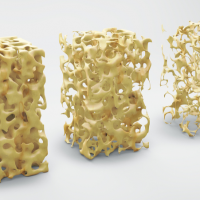Making Decisions as a Family

When patients don’t stipulate their healthcare wishes in an advanced directive, families will have to use their own discernment to make decisions about the loved one’s care plan. This can be kindling for some sharp disagreements and tough conversations. Even families with great relationships can struggle to make these kinds of decisions. However hard, these decisions need to be made in a timely manner to provide the proper level of care for the patient.
To help families negotiate these decisions, hospices will provide a social worker and chaplain who can offer advice and counsel families through this difficult time. One of the most important things to do during this time is to ensure everyone’s voice is heard. It might seem inefficient to seek so many opinions, but it’s vital that everyone who cares for the patient feels like they’re opinion matters.
Holding family meetings instead of playing phone tag is a great way to make the process run more smoothly. Getting everyone in the same room lets ideas and emotions flow organically and typically renders a final decision faster than other options.
Setting an agenda and appointing a facilitator for these meetings will be of great benefit. Doing so gives needed structure to a chaotic and confusing time for the family. However, don’t be afraid to go off script a little to validate other people’s emotions. Family members will likely be feeling emotions they’re not used to dealing with and you don’t want to overlook that.
Although it would be nice, not all decisions will be unanimous. People will disagree with others, and that’s okay. Go with the majority and do what you can to build consensus with the dissenting members. Let them know you appreciate their input and want to keep them involved in the process with future decisions that need to be made.
We have trained staff members ready to help families in times like this at Cura-HPC. If your loved one is in need of hospice care, please give us a call.



